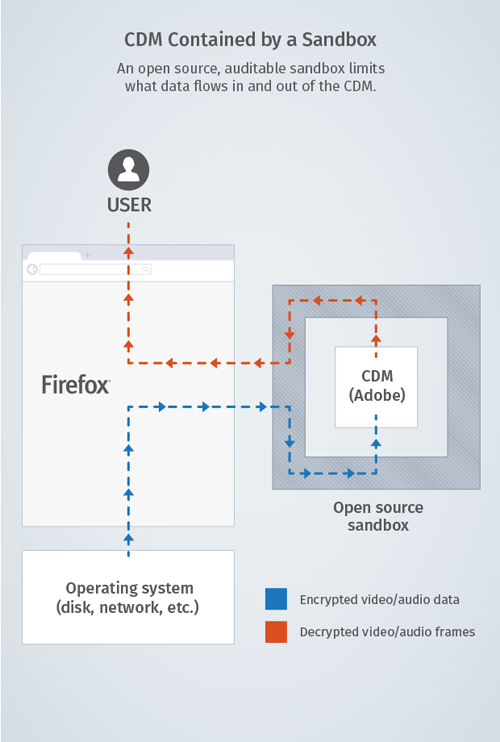Free Software Foundation urges Mozilla to abandon DRM module in Firefox browser
 The Free Software Foundation (FSF) strongly condemns Mozilla’s decision to embed Adobe’s proprietary DRM support into Firefox.
The Free Software Foundation (FSF) strongly condemns Mozilla’s decision to embed Adobe’s proprietary DRM support into Firefox.According to the FSF, this is contrary to the fundamental principles on which the Mozilla Foundation is based.
On May 14, Andreas Gal, CTO of Mozilla, announced that “since most competitive browsers and the content industry have mastered the W3C EME specifications, Mozilla has little choice but to follow their example and also implement EME so that our users have access to all the content they like. ”
 We are talking about the Encrypted Media Extensions (EME) specifications, which provide an API for controlling content playback in the browser through the HTML5 <video> element. That is, built-in DRM will appear directly in the browser, so that the right holders will be able to prohibit / restrict the playback of movies and music on users' computers. Such modules are used, for example, to control access to videos in the Netflix service. This company is one of the main developers of the standard, along with Google and Microsoft.
We are talking about the Encrypted Media Extensions (EME) specifications, which provide an API for controlling content playback in the browser through the HTML5 <video> element. That is, built-in DRM will appear directly in the browser, so that the right holders will be able to prohibit / restrict the playback of movies and music on users' computers. Such modules are used, for example, to control access to videos in the Netflix service. This company is one of the main developers of the standard, along with Google and Microsoft.')
The Free Software Foundation recalls that “Mozilla achieved success by defending the freedom of its users and explaining the importance of this freedom, including by publishing Firefox source code, allowing others to make changes to it and maintaining web standards when others tried to impose proprietary extensions” .
“Popularity is not an end in itself. This is especially true for the Mozilla Foundation, which is a non-profit organization with an ethical mission, ”says the FSF, stating that Mozilla ranks with its proprietary competitors for fear of losing market share in browsers.
The browser DRM is implemented in such a way that the JavaScript API provides only an interface for interaction, and the content decryption module Content Decryption Module (CDM) controls the acquisition of a license and the exchange of cryptographic keys and implements proprietary license management methods. After a lengthy discussion, the W3C consortium decided that the creators of the CDM modules are not required to publish the CDM specifications (although the W3C welcomes if they do it voluntarily). The W3C itself should standardize only the JavaScript API to access them. The characteristics of a specific CDM are a trade secret.

Andreas Gal emphasizes that in the Firefox browser, the Adobe module is placed in a sandbox with limited functions. He will not be able to access the disk or resources on the local network. This distinguishes Firefox from other browsers. Moreover, Firefox will initially ship without a proprietary module. The browser downloads it from the Adobe server and activates only as directed by the user.

“Although Mozilla will not distribute the proprietary DRM plugin from Adobe, but it will, as an official function, encourage Firefox users to install it when the user opens a page with DRM-protected content in the browser. We agree with Cory Doctorow, who says that there is no fundamental difference between “installing DRM” and “installing code that sets DRM,” the FSF retorts. “This approach does not solve the fundamental ethical problems that inevitably arise when installing proprietary software.”
The only way out in this situation for Mozilla, according to the FSF, is to cancel the decision and abandon DRM support. Users are encouraged to express their opinion: write a letter to Andreas Gal, use the version of Firefox without the EME code, and also support the FSF campaign against DRM in the browser .
Source: https://habr.com/ru/post/223099/
All Articles